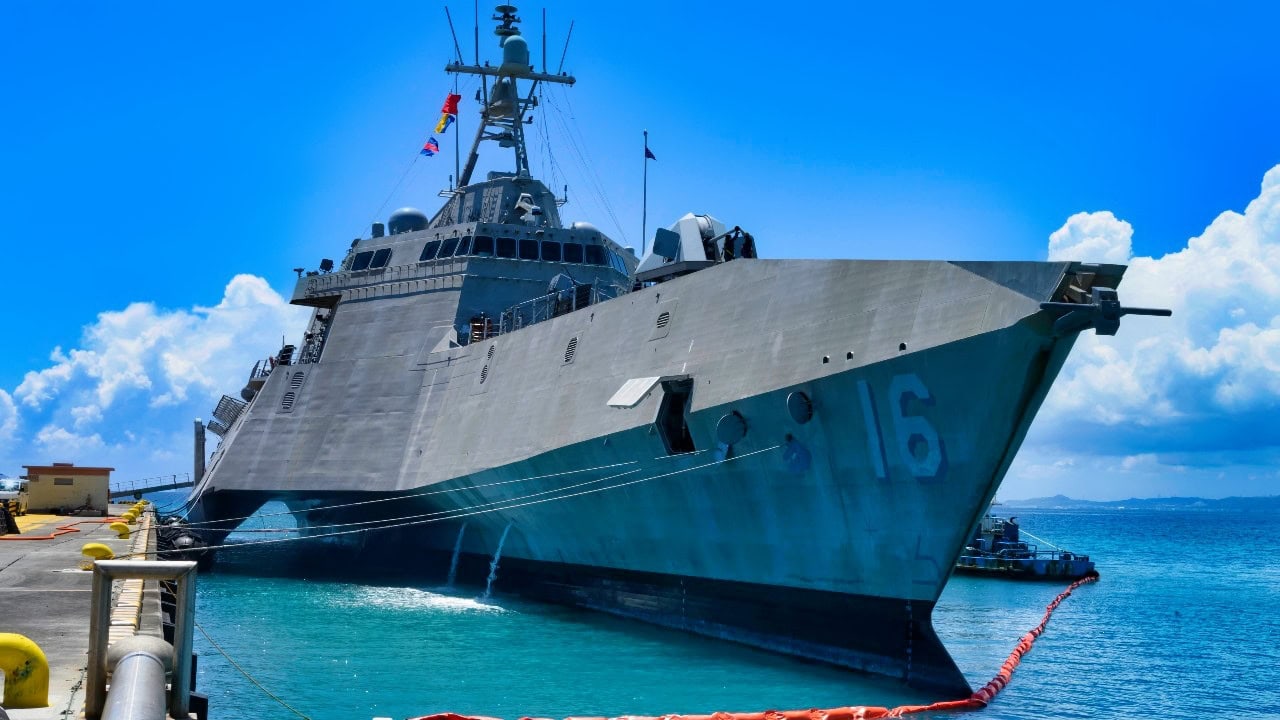Though the United States Navy has some of the most advanced vessels in the world, it hasn’t all been smooth sailing.
The United States Navy’s capabilities are unparalleled. The Navy boasts the quietest submarines, the largest aircraft carriers, and the most capable frigates in the world. However, three ship classes, while very advanced on paper, have proven to be quite problematic in practice.
Here are the US Navy’s lemons.
Zumwalt-class
The Zumwalt-class is one of the more embarrassing of the US Navy’s surface vessel projects—though hopes were initially relatively high for the ship.
At first glance, the most notable aspect of the ships is their rather odd tumblehome hull, which appears much like the underside of the ship hull, belly-up.
The design is intended to reduce the ship’s radar cross-section.
And while it would not seem completely invisible, it would appear significantly smaller — despite the fact the Zumwalts are 100 feet longer and 13 feet wider than the US Navy’s venerable Arleigh Burke-class destroyers.
The Zumwalt class was intended to fill a niche shore bombardment role. In support of that mission, the ship has a pair of 155mm naval artillery pieces on the deck, nestled in stealthily contoured pods that fold out when deploying the artillery pieces.
Unfortunately, the US Navy decided it would not be financially practical to produce ammunition for the guns, which was incompatible with NATO-standard 155mm artillery shells, and virtually none were made.
Seawater has penetrated several of the ship’s systems, including the motor drive oil system, and, in a later incident, penetrated the ship’s drive shaft bearings.
Ultimately, the class was significantly reduced to just three ships, and the naval artillery pieces were removed and replaced with the upcoming Long-Range Hypersonic Weapon.
Independence-class
The Independence-class is one of two classes that make up the US Navy’s Littoral Combat Ship. Intended to operate in shallow coastal waters rather than with larger blue water surface ships, the Independence-class unique trimaran hull design minimizes the hull’s contact with the water, reducing drag and giving it a very high 44-knot top speed.
Despite the promise held by the ship, the class has faced several setbacks.
The first Independence-class experienced severe corrosion issues, necessitating treatments to its surface and reevaluating the other ship’s ability to resist corrosion.
In 2022, it was found that nearly half of the class had significant cracking above the waterline, which was exacerbated in high sea states and at high speed—restricting the ship’s speed in some circumstances.
Freedom-class
The other class within the Littoral Combat Ship grouping, the Freedom-class, has also proved to be a headache for the US Navy. Though the ship is outwardly a more conventional design than the Independence-class ships, its two diesel engines and two gas turbines, mated to water jets, give it an innovative and high-speed ability, up to 47 knots — on paper at least.
Early in the Freedom-class service history, a routine maintenance check found metallic particles in a filtration system caused by a faulty clutch. Later that year, a Freedom-class ship’s diesel engine ingested seawater.
A faulty combining gear has plagued the Freedom-class design, essentially a component that connects propulsion systems for achieving higher speeds. The issue has been so problematic that the US Navy stopped Freedom-class deliveries until a fix could be installed on the ships.
The Freedom-class has been so problematic that the US Navy opted to retire some of the ships early, an entire decade before the end of their projected service lives, to save money and reinvest it elsewhere.
About the Author: Caleb Larson
Caleb Larson is an American multiformat journalist based in Berlin, Germany. His work covers the intersection of conflict and society, focusing on American foreign policy and European security. He has reported from Germany, Russia, and the United States. Most recently, he covered the war in Ukraine, reporting extensively on the war’s shifting battle lines from Donbas and writing on the war’s civilian and humanitarian toll. Previously, he worked as a Defense Reporter for POLITICO Europe. You can follow his latest work on X.

